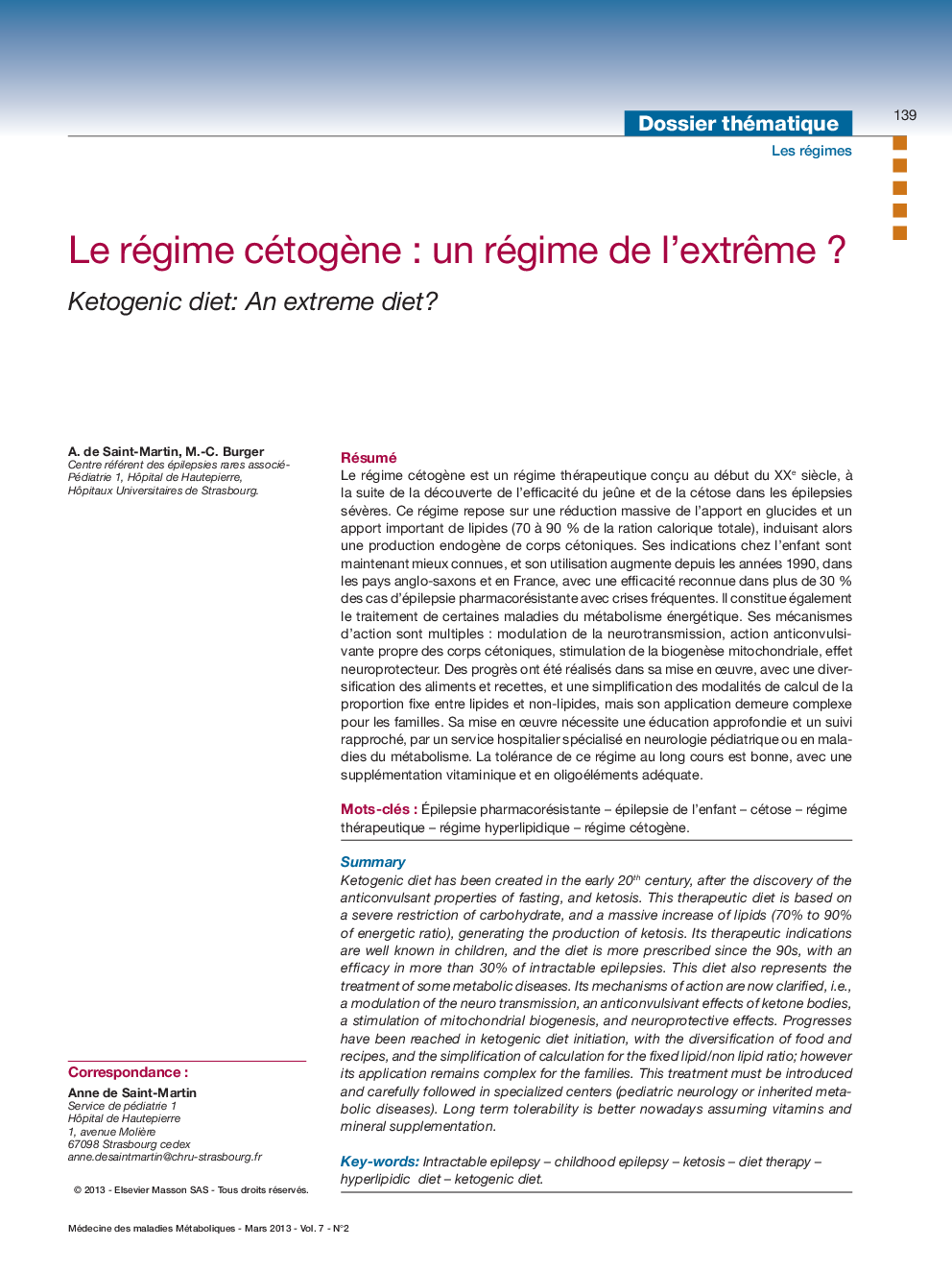| Article ID | Journal | Published Year | Pages | File Type |
|---|---|---|---|---|
| 3274855 | Médecine des Maladies Métaboliques | 2013 | 5 Pages |
Abstract
Ketogenic diet has been created in the early 20th century, after the discovery of the anticonvulsant properties of fasting, and ketosis. This therapeutic diet is based on a severe restriction of carbohydrate, and a massive increase of lipids (70% to 90% of energetic ratio), generating the production of ketosis. Its therapeutic indications are well known in children, and the diet is more prescribed since the 90s, with an efficacy in more than 30% of intractable epilepsies. This diet also represents the treatment of some metabolic diseases. Its mechanisms of action are now clarified, i.e., a modulation of the neuro transmission, an anticonvulsivant effects of ketone bodies, a stimulation of mitochondrial biogenesis, and neuroprotective effects. Progresses have been reached in ketogenic diet initiation, with the diversification of food and recipes, and the simplification of calculation for the fixed lipid/non lipid ratio; however its application remains complex for the families. This treatment must be introduced and carefully followed in specialized centers (pediatric neurology or inherited metabolic diseases). Long term tolerability is better nowadays assuming vitamins and mineral supplementation.
Keywords
Related Topics
Health Sciences
Medicine and Dentistry
Endocrinology, Diabetes and Metabolism
Authors
A. de Saint-Martin, M.-C. Burger,
